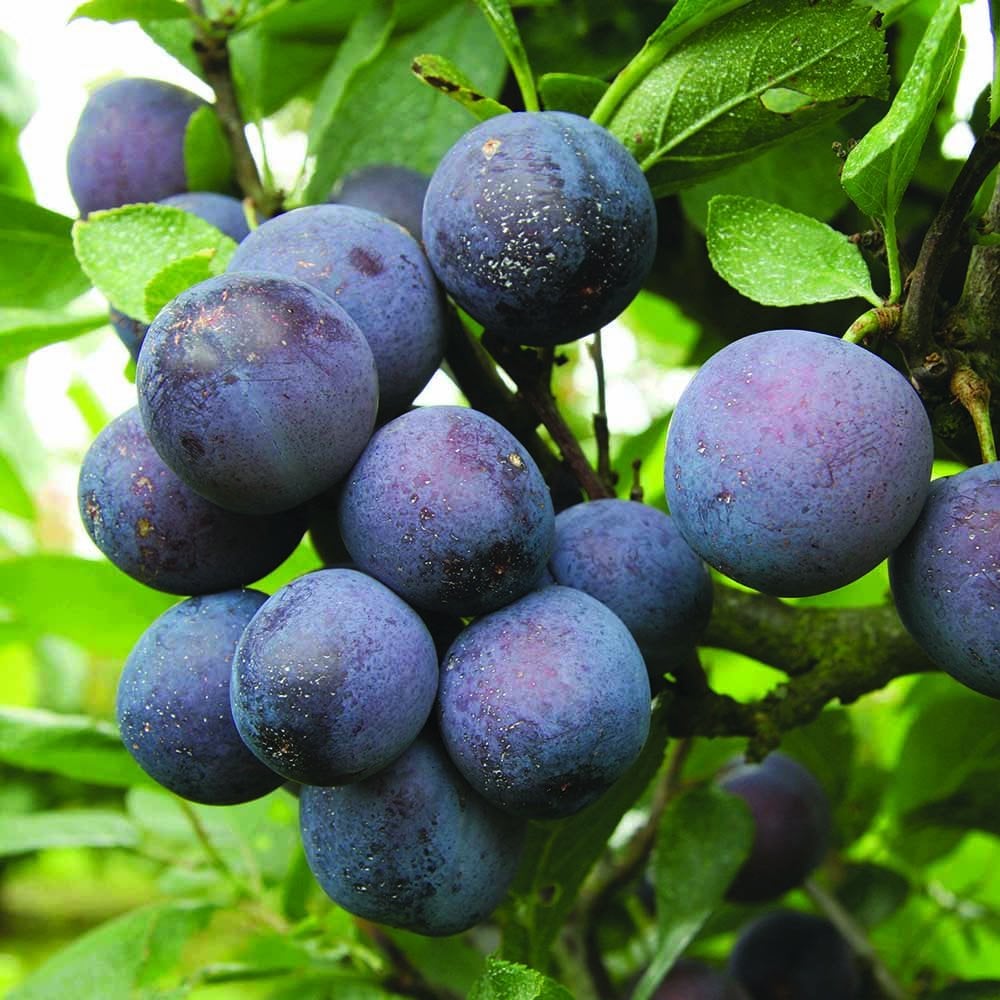
Farleigh Damson Tree
Farleigh Damson Tree
Cooking Damson Trees

Farleigh Damson Tree
Cooking Damson Trees

Key features






Description
Farleigh Damson produces heavy crops of dark blue damsons. They aren't the largest of fruits but the quantity easily makes up for this. They have sweet, juicy flesh that is ideal for culinary purposes, including desserts, jams and wine.
A hardy variety, Farleigh Damson is one of the best choices for northerly locations and has received the acclaimed RHS Award of Garden Merit. The tree is self-fertile, compact and has pretty white blossom, making it also highly suited for growing in gardens.
Prunus insititia 'Farleigh Damson' originates from Kent in around 1820.
| Small shrubs (1-3) | Young trees & 4+ small shrubs | Select semi-mature trees & shrubs (1-4) | All other mature trees (any quantity) | |
|---|---|---|---|---|
| Mainland UK ex. Scottish Highlands | £10 | £12 | £35 | from £55 |
| Scottish Highlands & the Islands | From £30 | |||
| Outside Mainland UK | Currently we are unable to deliver outside of Mainland UK | |||
Product Details
Key features






Description
Farleigh Damson produces heavy crops of dark blue damsons. They aren't the largest of fruits but the quantity easily makes up for this. They have sweet, juicy flesh that is ideal for culinary purposes, including...
Farleigh Damson produces heavy crops of dark blue damsons. They aren't the largest of fruits but the quantity easily makes up for this. They have sweet, juicy flesh that is ideal for culinary purposes, including desserts, jams and wine.
A hardy variety, Farleigh Damson is one of the best choices for northerly locations and has received the acclaimed RHS Award of Garden Merit. The tree is self-fertile, compact and has pretty white blossom, making it also highly suited for growing in gardens.
Prunus insititia 'Farleigh Damson' originates from Kent in around 1820.
Planting & Care
Delivery Information
| Small shrubs (1-3) | Young trees & 4+ small shrubs | Select semi-mature trees & shrubs (1-4) | All other mature trees (any quantity) | |
|---|---|---|---|---|
| Mainland UK ex. Scottish Highlands | £10 | £12 | £35 | from £55 |
| Scottish Highlands & the Islands | From £30 | |||
| Outside Mainland UK | Currently we are unable to deliver outside of Mainland UK | |||
MORE TO GROW YOUR GARDEN








